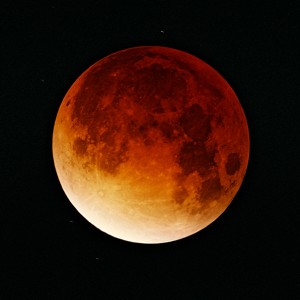Want to the See Dark Side of the Moon?
Sorry Pink Floyd fans, we're talking about the real moon and its real "dark side." Couple of things that need clearing up before we continue so everyone is on the same page. One, the moon rotates. Contrary to what many believe, the Earth's gravitational pull only keeps the moon close, but does not prevent it from spinning. Much in the same way that the sun keeps the Earth in the solar system but we are still spinning at over a 1,000 miles an hour.

Two, there is no real "dark side of the moon." Most of us only see one side because the rotations of the Earth and its restrained rock coincide. But satellites and space station images have shown all sides of the moon. Sorry, no secret colonies, no aliens (on the surface, anyway). But don't take our word for it, the new feature on Google Maps will allow you to examine it all for yourself.
"Google Maps used its Google+ profile yesterday to announce a new out-of-this-world feature, allowing users to explore the craters on Mars and take a virtual trip to the moon," reported Amy Gesenhues.
Humans are natural explorers, and we constantly want more. First, there was just regular Google Maps. Then they added satellite images and Google Earth. Next came street view so you felt like you were walking down the road and not just hovering over it. Now, we're into space and it won't be long until you can street view the bottom of the oceans' deepest trenches.
Getting started is easy: "To find the moon and nearby planet via Google Maps, click the Earth view link in the bottom left corner of the Google Maps homepage. Once the 3D version of Earth has loaded, zoom all the way out to see options for selecting the Moon or Mars across the bottom of the page in the 'Explore' section. Clicking on the 'Moon' or 'Mars' links will launch images of the celestial objects, where users can zoom in to take a closer look," reported Gesenhues.

Two, there is no real "dark side of the moon." Most of us only see one side because the rotations of the Earth and its restrained rock coincide. But satellites and space station images have shown all sides of the moon. Sorry, no secret colonies, no aliens (on the surface, anyway). But don't take our word for it, the new feature on Google Maps will allow you to examine it all for yourself.
"Google Maps used its Google+ profile yesterday to announce a new out-of-this-world feature, allowing users to explore the craters on Mars and take a virtual trip to the moon," reported Amy Gesenhues.
Humans are natural explorers, and we constantly want more. First, there was just regular Google Maps. Then they added satellite images and Google Earth. Next came street view so you felt like you were walking down the road and not just hovering over it. Now, we're into space and it won't be long until you can street view the bottom of the oceans' deepest trenches.
Getting started is easy: "To find the moon and nearby planet via Google Maps, click the Earth view link in the bottom left corner of the Google Maps homepage. Once the 3D version of Earth has loaded, zoom all the way out to see options for selecting the Moon or Mars across the bottom of the page in the 'Explore' section. Clicking on the 'Moon' or 'Mars' links will launch images of the celestial objects, where users can zoom in to take a closer look," reported Gesenhues.





Have your say
Feel free to take part in the discussion! Please be nice and do not include any abusive comments or spam. All comments are moderated and MAXtech Agency reserves the right to delete any comment.